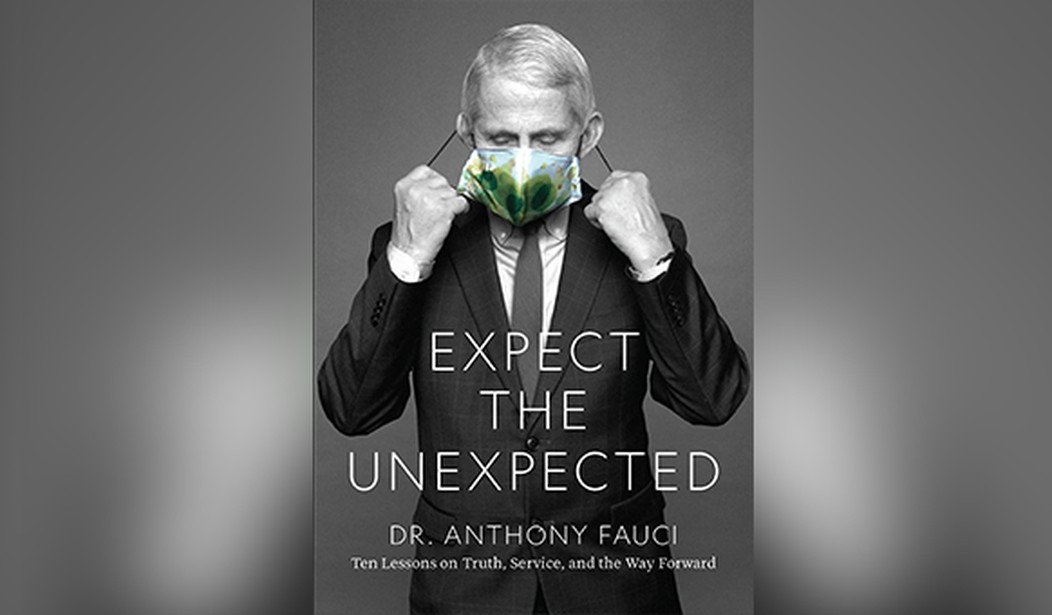We are living in a strange time when reason has fallen short of human expectations and there is, once again, pressure to place our trust in faith. Leighton Woodhouse hit the nail on the head when he argued that we have appointed a New Clerisy to rule over us, not because they are infallible but to save ourselves from the tide of uncertainty that seems to have engulfed our once seemingly confident global world.
Some time during the George W. Bush presidency, Democrats began proudly calling themselves “the party of science.” …
Today, in the age of biological and ecological emergency, the Democrats’ scientific brand has taken center stage again, reflected in an assertion that has become something of a mantra: “I believe in science.” The line is recited by presidential candidates and printed on face masks….
The Democratic Party has become the party not of science, but of fealty to the clerics of science. “I believe in science” has come to mean, “I do not question expert authority,” which is as antithetical to the scientific spirit as you can get.
Unfortunately, the new clergy seem too fallible to take on trust. They flip-flop on expert advice and one scientist denounces the other on YouTube. Once things seemed more cut and dried. Once we were at the End of History. Science could predict the future more or less and the public hoped with increasing accuracy. Ever since the 17th century, the expectation was that the scientific revolution would supply the answers.
Francis Bacon envisioned unending progress as scientific knowledge would allow man to control Nature and extract the benefits. His maxim: “Nature, to be commanded, must be obeyed.” Man shall obey Nature to learn her secrets but once they are known he will command her. A utopia will ensue in which scientists provide all the benefits to mankind.
But not everyone was convinced that the way would always be so smooth. Blaise Pascal had doubts. Looking into the night sky, he remarked, “The eternal silence of those infinite spaces frightens me.” Suppose we could never get our minds around that infinitude of bits? No matter; Newton, with his famous remark, “hypothesis non fingo,” thought it enough if we could predict the behavior of phenomena with mathematical models. But…
There was a profound enigma lurking in the thinking of Galileo and Newton. It was genius to declare that knowledge of Nature is constituted within mathematics, not within human categories of understanding; yet, as long as the mathematical laws were consistent with human cognition, the full implication of this thinking lay hidden. The advent of quantum mechanics in the first part of the Twentieth Century brought it to light: a theory may be preposterous from the perspective of human intelligibility but lead to predictions that agree with empirical observation—and therefore be scientifically valid. Man can possess knowledge beyond the limits of his physical understanding …
Toward the end of the Twentieth Century, the emergence of high performance computing allowed scientists to construct huge models consisting of thousands of variables and parameters. The complexity of these models prevents them from fulfilling the most basic requirement of science: validation by the successful prediction of future events.
As the frontier moved from the simple, computable problems of the early 20th century to complex systems — of which biotechnology, artificial intelligence, social networks, and eco-engineering are prime examples — they began to involve the management of uncertainty because it was difficult to control all the variables involved. The care with which some scientists have approached the subject of gene drives, a biological technology as powerful as “gain of function,” illustrates the challenges of dealing with uncertainties.
A gene drive is a natural process and technology of genetic engineering that propagates a particular suite of genes throughout a population … Gene drives affect all future generations and represent the possibility of a larger change in a living species than has been possible before.
Technology like this can alter a whole species with literally incalculable effects. In order to prevent such a runaway event from happening, one of the pioneers of gene drives has developed a technique called daisy chain gene drives that allow the transmission of the payload genes only a set number of times.
Esvelt is credited as the first to describe how CRISPR gene drives could be used to alter the traits of wild populations in an evolutionarily stable manner. And recently, he and his Sculpting Evolution group devised a new form of technology, called ‘daisy drives’, which would let communities aiming to prevent disease alter wild organisms in local ecosystems.
By emphasizing universal safeguards and early transparency, he has worked to ensure that community discussions always precede and guide the development of technologies that will impact the shared environment.
Esvelt’s idea is simple. Don’t assume what is yet to be determineed. Avoid making changes that are global and irreversible, that cannot be countermanded by nations or local communities unless one is very, very careful. Or you’ll be sorrreee.
Leighton Woodhouse’s clerico-experts have knowledge, often partial knowledge, but they do not have certainty. That is no fault of theirs, just a byproduct of human limits, but certainty is what governments and anxious masses crave in a time of anxiety, something they often unjustifiably pretend they have. Our expert is not an oracle he “is a bureaucrat, albeit a highly technical one.”
In the coming years, the new clerisy will come forward with even more global solutions, endorsing trillion-dollar multidecade proposals in the fields of climate engineering, genetic alteration, and artificial intelligence. In each case the public will be asked to trust the science—to put all our eggs in the expert basket. Before we do, we would do well to recall the cautionary words of Freeman Dyson:
God forbid that we should give out a dream of our own imagination for a pattern of the world”. This was said by Francis Bacon, one of the founding fathers of modern science, almost four hundred years ago. Bacon was the smartest man of his time, with the possible exception of William Shakespeare. Bacon saw clearly what science could do and what science could not do. He is saying to the philosophers and theologians of his time: look for God in the facts of nature, not in the theories of Plato and Aristotle. I am saying to modern scientists and theologians: don’t imagine that our latest ideas about the Big Bang or the human genome have solved the mysteries of the universe or the mysteries of life. Here are Bacon’s words again: “The subtlety of nature is greater many times over than the subtlety of the senses and understanding”. In the last four hundred years, science has fulfilled many of Bacon’s dreams, but it still does not come close to capturing the full subtlety of nature. To talk about the end of science is just as foolish as to talk about the end of religion. Science and religion are both still close to their beginnings, with no ends in sight. Science and religion are both destined to grow and change in the millennia that lie ahead of us, perhaps solving some old mysteries, certainly discovering new mysteries of which we yet have no inkling.
_______
Books: Fly by Wire: The Geese, the Glide, the Miracle on the Hudson, by William Langewiesche. How much of the success of Chesley Sullenberger’s dramatic landing can actually be credited to his genius? Or is the “miracle” on the Hudson the result of extraordinary — but not widely known, and in some cases quite controversial — advances in aviation and computer technology over the past twenty years? In this book, Langewiesche takes readers on a strange and unexpected journey into the world of advanced aviation.










Join the conversation as a VIP Member